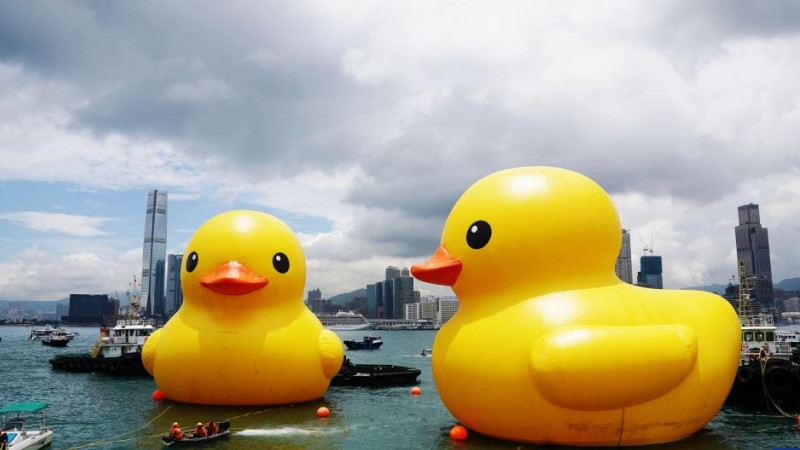Chongqing's museum displays history of Palace Museum antiques

A tourist visits a museum displaying the history of Palace Museum antiques moved there during World War II in southwest China's Chongqing, June 10, 2023. The museum is located in a former foreign firm, where nearly 4,000 cases of antiques were stored during wartime.
The items from the Palace Museum, also known as the Forbidden City, were moved to Chongqing in late 1930s when Japanese troops invaded Beijing.
During the Japanese bombing of Chongqing in the following years, the foreign firm placed a Swedish flag on the roof, which protected the building from being targeted.
After the war ended in 1945, the antiques were returned to Beijing. (Xinhua/Huang Wei)
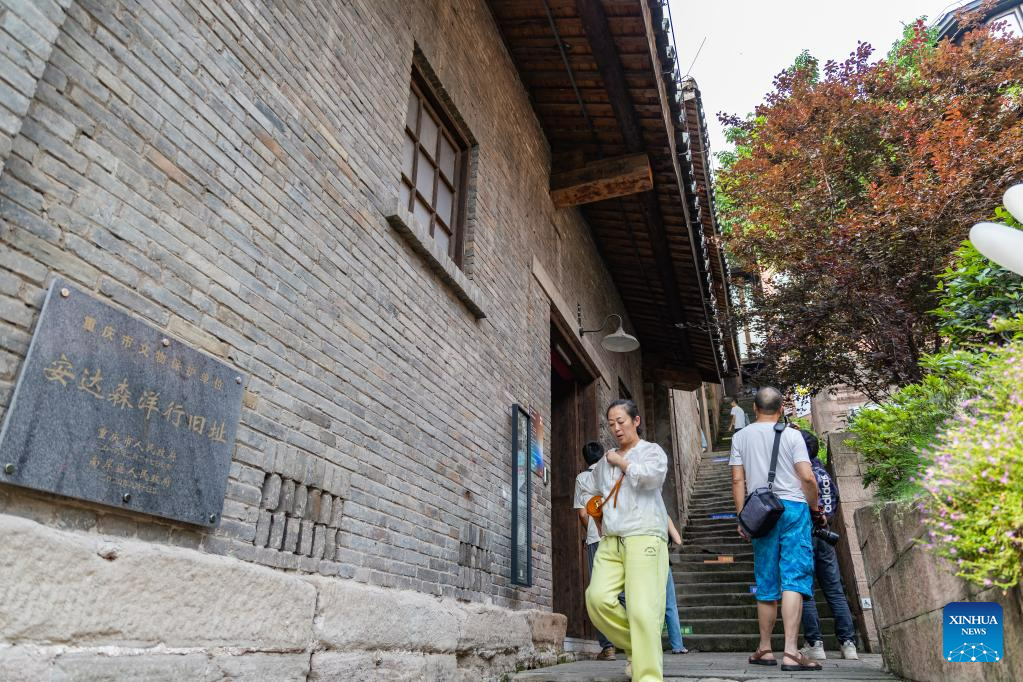
Tourists visit a museum displaying the history of Palace Museum antiques moved there during World War II in southwest China's Chongqing, June 10, 2023. The museum is located in a former foreign firm, where nearly 4,000 cases of antiques were stored during wartime.
The items from the Palace Museum, also known as the Forbidden City, were moved to Chongqing in late 1930s when Japanese troops invaded Beijing.
During the Japanese bombing of Chongqing in the following years, the foreign firm placed a Swedish flag on the roof, which protected the building from being targeted.
After the war ended in 1945, the antiques were returned to Beijing. (Xinhua/Huang Wei)

Tourists visit an exhibition at a museum displaying the history of Palace Museum antiques moved there during World War II in southwest China's Chongqing, June 9, 2023. The museum is located in a former foreign firm, where nearly 4,000 cases of antiques were stored during wartime.
The items from the Palace Museum, also known as the Forbidden City, were moved to Chongqing in late 1930s when Japanese troops invaded Beijing.
During the Japanese bombing of Chongqing in the following years, the foreign firm placed a Swedish flag on the roof, which protected the building from being targeted.
After the war ended in 1945, the antiques were returned to Beijing. (Xinhua/Liu Chan)

Tourist select souvenir at a cafe of a museum displaying the history of Palace Museum antiques moved there during World War II in southwest China's Chongqing, June 10, 2023. The museum is located in a former foreign firm, where nearly 4,000 cases of antiques were stored during wartime.
The items from the Palace Museum, also known as the Forbidden City, were moved to Chongqing in late 1930s when Japanese troops invaded Beijing.
During the Japanese bombing of Chongqing in the following years, the foreign firm placed a Swedish flag on the roof, which protected the building from being targeted.
After the war ended in 1945, the antiques were returned to Beijing. (Xinhua/Huang Wei)

Tourists select souvenir at a cafe of a museum displaying the history of Palace Museum antiques moved there during World War II in southwest China's Chongqing, June 10, 2023. The museum is located in a former foreign firm, where nearly 4,000 cases of antiques were stored during wartime.
The items from the Palace Museum, also known as the Forbidden City, were moved to Chongqing in late 1930s when Japanese troops invaded Beijing.
During the Japanese bombing of Chongqing in the following years, the foreign firm placed a Swedish flag on the roof, which protected the building from being targeted.
After the war ended in 1945, the antiques were returned to Beijing. (Xinhua/Chu Jiayin)
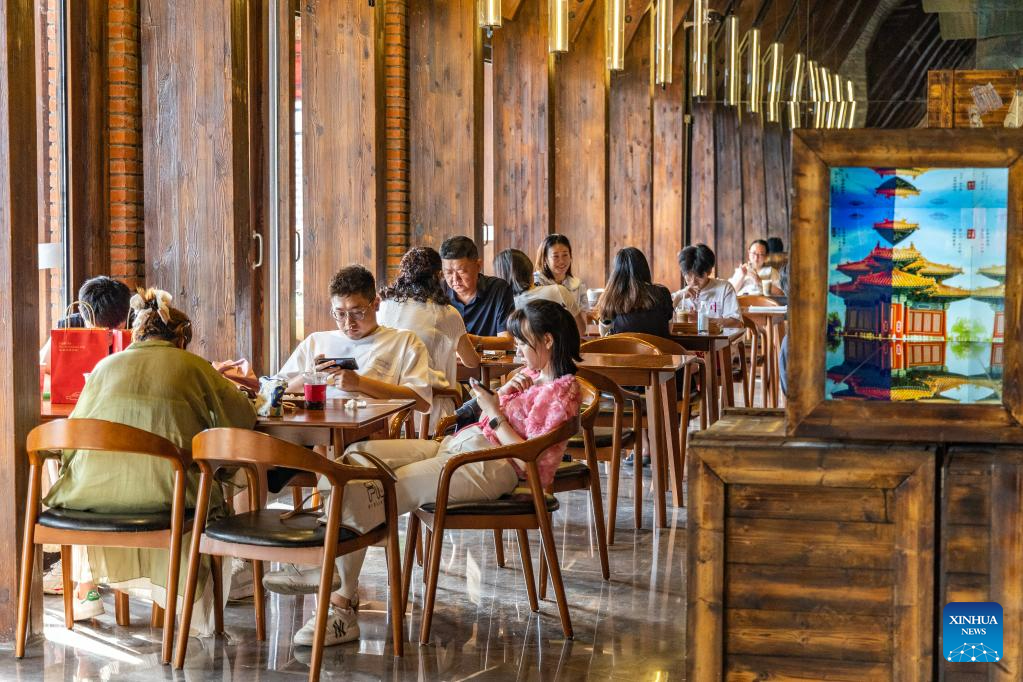
Tourist rest at a cafe of a museum displaying the history of Palace Museum antiques moved there during World War II in southwest China's Chongqing, June 10, 2023. The museum is located in a former foreign firm, where nearly 4,000 cases of antiques were stored during wartime.
The items from the Palace Museum, also known as the Forbidden City, were moved to Chongqing in late 1930s when Japanese troops invaded Beijing.
During the Japanese bombing of Chongqing in the following years, the foreign firm placed a Swedish flag on the roof, which protected the building from being targeted.
After the war ended in 1945, the antiques were returned to Beijing. (Xinhua/Huang Wei)

A tourist visits a museum displaying the history of Palace Museum antiques moved there during World War II in southwest China's Chongqing, June 10, 2023. The museum is located in a former foreign firm, where nearly 4,000 cases of antiques were stored during wartime.
The items from the Palace Museum, also known as the Forbidden City, were moved to Chongqing in late 1930s when Japanese troops invaded Beijing.
During the Japanese bombing of Chongqing in the following years, the foreign firm placed a Swedish flag on the roof, which protected the building from being targeted.
After the war ended in 1945, the antiques were returned to Beijing. (Xinhua/Chu Jiayin)

Tourists visit a museum displaying the history of Palace Museum antiques moved there during World War II in southwest China's Chongqing, June 10, 2023. The museum is located in a former foreign firm, where nearly 4,000 cases of antiques were stored during wartime.
The items from the Palace Museum, also known as the Forbidden City, were moved to Chongqing in late 1930s when Japanese troops invaded Beijing.
During the Japanese bombing of Chongqing in the following years, the foreign firm placed a Swedish flag on the roof, which protected the building from being targeted.
After the war ended in 1945, the antiques were returned to Beijing. (Xinhua/Huang Wei)

People enjoy a concert in celebration of the second anniversary of the opening of a museum displaying the history of Palace Museum antiques moved there during World War II in southwest China's Chongqing, June 10, 2023. The museum is located in a former foreign firm, where nearly 4,000 cases of antiques were stored during wartime.
The items from the Palace Museum, also known as the Forbidden City, were moved to Chongqing in late 1930s when Japanese troops invaded Beijing.
During the Japanese bombing of Chongqing in the following years, the foreign firm placed a Swedish flag on the roof, which protected the building from being targeted.
After the war ended in 1945, the antiques were returned to Beijing. (Xinhua/Huang Wei)

This photo shows the scenery seen from a museum displaying the history of Palace Museum antiques moved there during World War II in southwest China's Chongqing, June 12, 2023. The museum is located in a former foreign firm, where nearly 4,000 cases of antiques were stored during wartime.
The items from the Palace Museum, also known as the Forbidden City, were moved to Chongqing in late 1930s when Japanese troops invaded Beijing.
During the Japanese bombing of Chongqing in the following years, the foreign firm placed a Swedish flag on the roof, which protected the building from being targeted.
After the war ended in 1945, the antiques were returned to Beijing. (Xinhua/Chu Jiayin)

This photo shows a museum displaying the history of Palace Museum antiques moved there during World War II in southwest China's Chongqing, June 10, 2023. The museum is located in a former foreign firm, where nearly 4,000 cases of antiques were stored during wartime.
The items from the Palace Museum, also known as the Forbidden City, were moved to Chongqing in late 1930s when Japanese troops invaded Beijing.
During the Japanese bombing of Chongqing in the following years, the foreign firm placed a Swedish flag on the roof, which protected the building from being targeted.
After the war ended in 1945, the antiques were returned to Beijing. (Xinhua/Huang Wei)
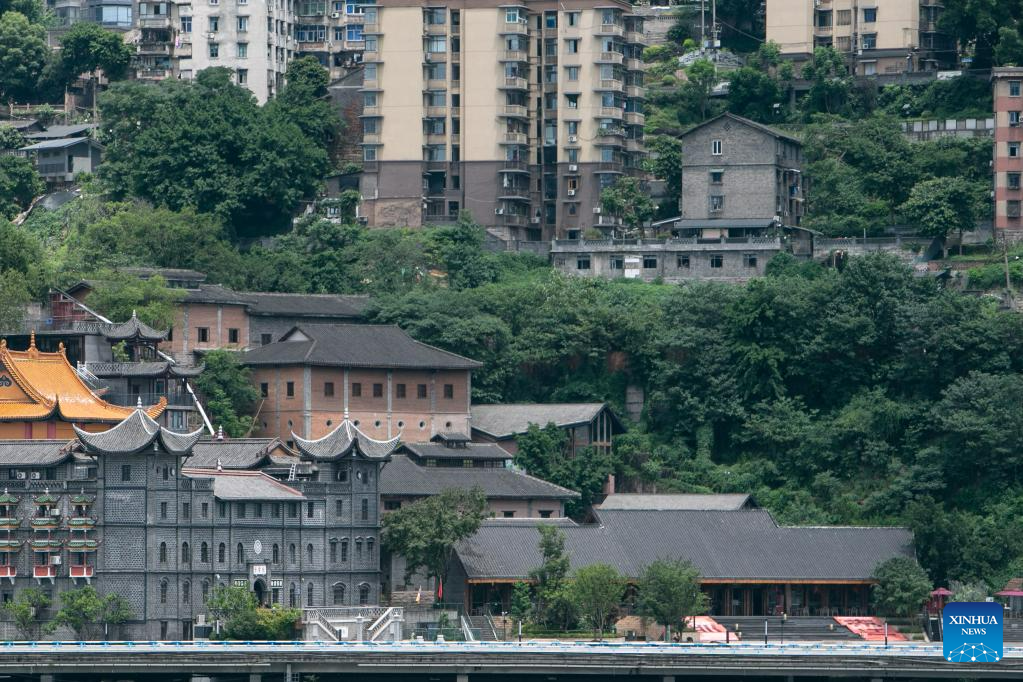
This photo shows an exterior view of a museum displaying the history of Palace Museum antiques moved there during World War II in southwest China's Chongqing, June 12, 2023. The museum is located in a former foreign firm, where nearly 4,000 cases of antiques were stored during wartime.
The items from the Palace Museum, also known as the Forbidden City, were moved to Chongqing in late 1930s when Japanese troops invaded Beijing.
During the Japanese bombing of Chongqing in the following years, the foreign firm placed a Swedish flag on the roof, which protected the building from being targeted.
After the war ended in 1945, the antiques were returned to Beijing. (Xinhua/Chu Jiayin)

This photo shows an exterior view of a museum displaying the history of Palace Museum antiques moved there during World War II in southwest China's Chongqing, June 10, 2023. The museum is located in a former foreign firm, where nearly 4,000 cases of antiques were stored during wartime.
The items from the Palace Museum, also known as the Forbidden City, were moved to Chongqing in late 1930s when Japanese troops invaded Beijing.
During the Japanese bombing of Chongqing in the following years, the foreign firm placed a Swedish flag on the roof, which protected the building from being targeted.
After the war ended in 1945, the antiques were returned to Beijing. (Xinhua/Huang Wei)
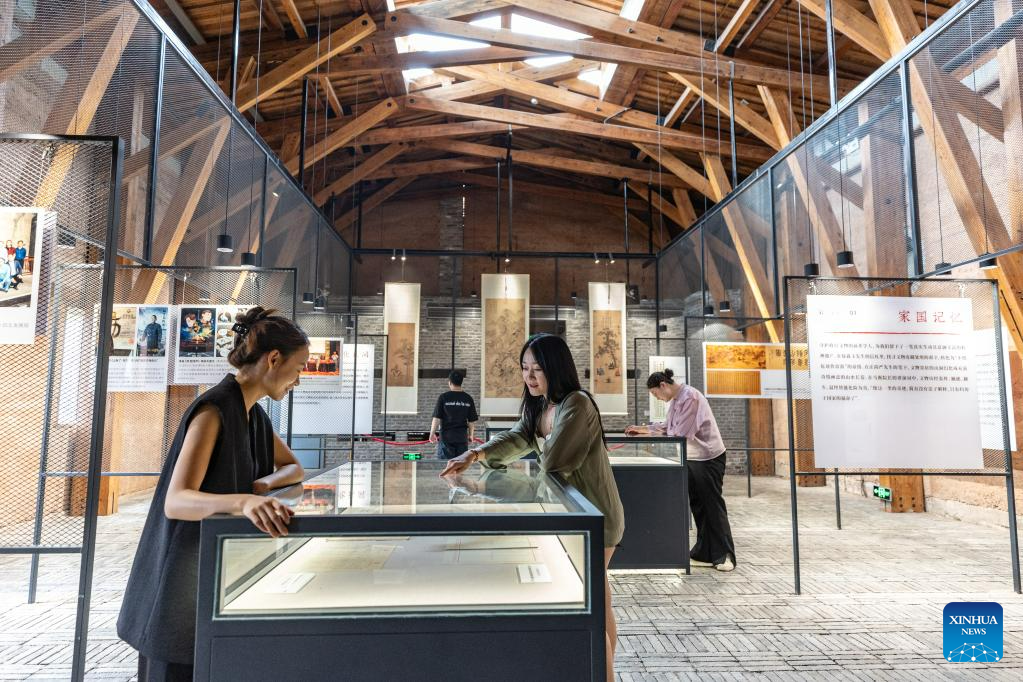
Tourists visit a museum displaying the history of Palace Museum antiques moved there during World War II in southwest China's Chongqing, June 10, 2023. The museum is located in a former foreign firm, where nearly 4,000 cases of antiques were stored during wartime.
The items from the Palace Museum, also known as the Forbidden City, were moved to Chongqing in late 1930s when Japanese troops invaded Beijing.
During the Japanese bombing of Chongqing in the following years, the foreign firm placed a Swedish flag on the roof, which protected the building from being targeted.
After the war ended in 1945, the antiques were returned to Beijing. (Xinhua/Huang Wei)

A tourist visits a museum displaying the history of Palace Museum antiques moved there during World War II in southwest China's Chongqing, June 10, 2023. The museum is located in a former foreign firm, where nearly 4,000 cases of antiques were stored during wartime.
The items from the Palace Museum, also known as the Forbidden City, were moved to Chongqing in late 1930s when Japanese troops invaded Beijing.
During the Japanese bombing of Chongqing in the following years, the foreign firm placed a Swedish flag on the roof, which protected the building from being targeted.
After the war ended in 1945, the antiques were returned to Beijing. (Xinhua/Chu Jiayin)

Tourists visit a museum displaying the history of Palace Museum antiques moved there during World War II in southwest China's Chongqing, June 10, 2023. The museum is located in a former foreign firm, where nearly 4,000 cases of antiques were stored during wartime.
The items from the Palace Museum, also known as the Forbidden City, were moved to Chongqing in late 1930s when Japanese troops invaded Beijing.
During the Japanese bombing of Chongqing in the following years, the foreign firm placed a Swedish flag on the roof, which protected the building from being targeted.
After the war ended in 1945, the antiques were returned to Beijing. (Xinhua/Huang Wei)
Photos
Related Stories
- Chinese, Russian museums sign cooperation memorandum
- China's Shanxi builds museum on Neolithic civilization
- Rural museum in E China's Jiangsu makes foreign industry insiders its fans
- Engaging TV documentary attracts young people to museums
- Chinese Canadian Museum to open in Vancouver in July
- Special event in celebration of International Museum Day held in Shanghai
- China opens 382 new museums in 2022
- Feature: China-aided Senegalese museum becomes place of cultural exchanges
- Beijing Opera show breathes life into ancient relics at museum
- Chinese people trace history in museums
Copyright © 2023 People's Daily Online. All Rights Reserved.








